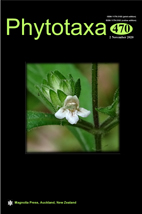Abstract
A new species, Cantharellus albus, was collected from southwestern China and described with both morphological and molecular characters. It differs from other species of Cantharellus by its smooth white pileus, white hymenophore, and white stipe, the latter turning yellow after bruising. The phylogenetic tree inferred from the combined dataset of three DNA fragments, namely large subunit ribosomal RNA gene (LSU), RNA polymerase II second largest subunit (rpb2), and translation elongation factor 1-alpha gene (tef1), indicated that the new species is distinct from other species of Cantharellus and is a member of sect. Flavobrunnei within the subgenus Parvocantharellus.

